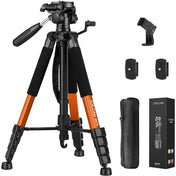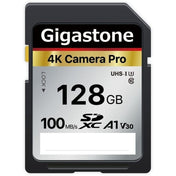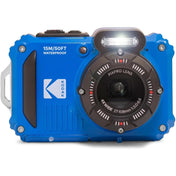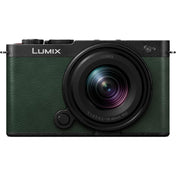In the realm of photography, one of the most critical concepts to grasp is depth of field (DoF). Understanding how it works can drastically enhance your photographs, making your images more engaging and aesthetically pleasing. In this comprehensive guide, we will explore the nuances of narrow versus wide depth of field and how these techniques can impact your photography skills. Plus, we'll dive into the importance of equipment, such as your trusty camera tripod for DSLR, to help you achieve the best results.
What is Depth of Field?
Depth of field refers to the range of distance within a photograph that appears acceptably sharp. It’s a crucial aspect of framing your shots, as it affects how viewers perceive your subject. In essence, a narrow depth of field can isolate your subject, while a wide depth of field will encompass more of the scene in sharp focus.
Narrow Depth of Field: Creating Focus
A narrow depth of field (DoF) means that only a small part of the image is in focus, while the rest is blurred. This technique is particularly useful for portrait photography, as it helps to draw attention to your subject while eliminating distracting backgrounds.
When to Use Narrow Depth of Field
- Portraits: Focusing on the subject while blurring the background adds a professional touch and highlights facial features.
- Macro Photography: This technique allows for detailed close-ups of small subjects, creating an intimate connection with the viewer.
- Isolating Subjects: Use narrow DoF to separate your subject from the environment, creating a compelling narrative.
How to Achieve Narrow Depth of Field
To achieve a narrow depth of field, you will need:
- A lens with a wide maximum aperture (e.g., f/1.4, f/1.8, or f/2.8).
- To position your subject close to the camera.
- A background that is far from the subject, which enhances the blurring effect.
Using your camera tripod for DSLR can help maintain stability, ensuring your images are sharp and focus is precise, even with a shallow depth of field.
Wide Depth of Field: Embracing the Scene
A wide depth of field offers more of the scene in focus, making it ideal for landscape photography and situations where you want to capture the beauty of the background alongside your subject. This technique emphasizes context and allows for storytelling in your images.
When to Use Wide Depth of Field
- Landscape Photography: Capturing expansive vistas where you want every detail sharp ensures viewers experience the grandeur of nature.
- Real Estate Photography: Showing entire rooms in focus can effectively communicate the layout and aesthetics of the space.
- Group Photos: Ensuring everyone is in focus in a large group setting makes for a well-composed image.
How to Achieve Wide Depth of Field
To create a wide depth of field, follow these guidelines:
- Use a lens with a smaller maximum aperture (e.g., f/8, f/11, or f/22).
- Set your camera at a greater distance from your subject.
- Look for interesting foreground elements to include that continue the storytelling aspect.
While a wide depth of field can often be achieved easily, using a camera tripod for DSLR becomes essential, especially in low-light conditions, where longer exposures are necessary.
Comparative Aspects of Narrow and Wide Depth of Field
As you delve deeper into photography, comparing the effects of narrow and wide depths of field can be enlightening. Each technique has its strengths and weaknesses, which can drastically alter the mood and message of your photo.
Creative Expression
Narrow depth of field allows you to convey emotions and highlight your subjects effectively. In contrast, wide depth of field emphasizes the context and surroundings, calling attention to the scenery and atmospherics.
Technical Considerations
When using a narrow depth of field, focus can be more challenging, as precisely hitting your subject is crucial. Conversely, using a wide depth of field generally simplifies focus but may introduce challenges when looking to capture movement without blurriness.
Tips for Mastering Depth of Field
Whether you prefer a shallow or an extended depth of field, mastering both techniques is essential. Here are some top tips to integrate into your photography routine:
- Experiment: Don’t hesitate to switch between narrow and wide DoF settings and see how each effect suits your subject matter.
- Learn about Lens Choice: Different lenses produce varying effects on depth of field; understanding this can provide you with powerful tools.
- Use Tripods: Never underestimate the stability a camera tripod for DSLR can provide. Especially when using slower shutter speeds for wide depth of field.
Post-Processing Techniques
While achieving depth of field starts in-camera, post-processing can also play a significant role in enhancing this effect. Here are some ways to amplify both narrow and wide depth of field during editing:
For Narrow Depth of Field
- Use blur effects to enhance the background further if it’s not blurred enough in-camera.
- Adjust contrast and brightness to make your subject pop even further.
For Wide Depth of Field
- Increase clarity to sharpen the details in the background.
- Use cropping techniques to frame the scene correctly while ensuring all elements remain in focus.
Conclusion: Your Path to Photography Mastery
Mastering depth of field, whether it’s narrow or wide, is an essential skill for any photographer. By understanding how to manipulate and use these techniques effectively, you bring more creativity and professionalism to your work. Remember, your camera tripod for DSLR will be your best friend as you explore these depths throughout your photography journey. Embrace the practice, experiment with different settings, and watch your photography evolve into something truly remarkable.
Step into the Shopify or Wix store of another user. Begin your visit by clicking this store link. Kindly note that this is a promotional link, and we do not take responsibility for the content of the linked store.











